

导航


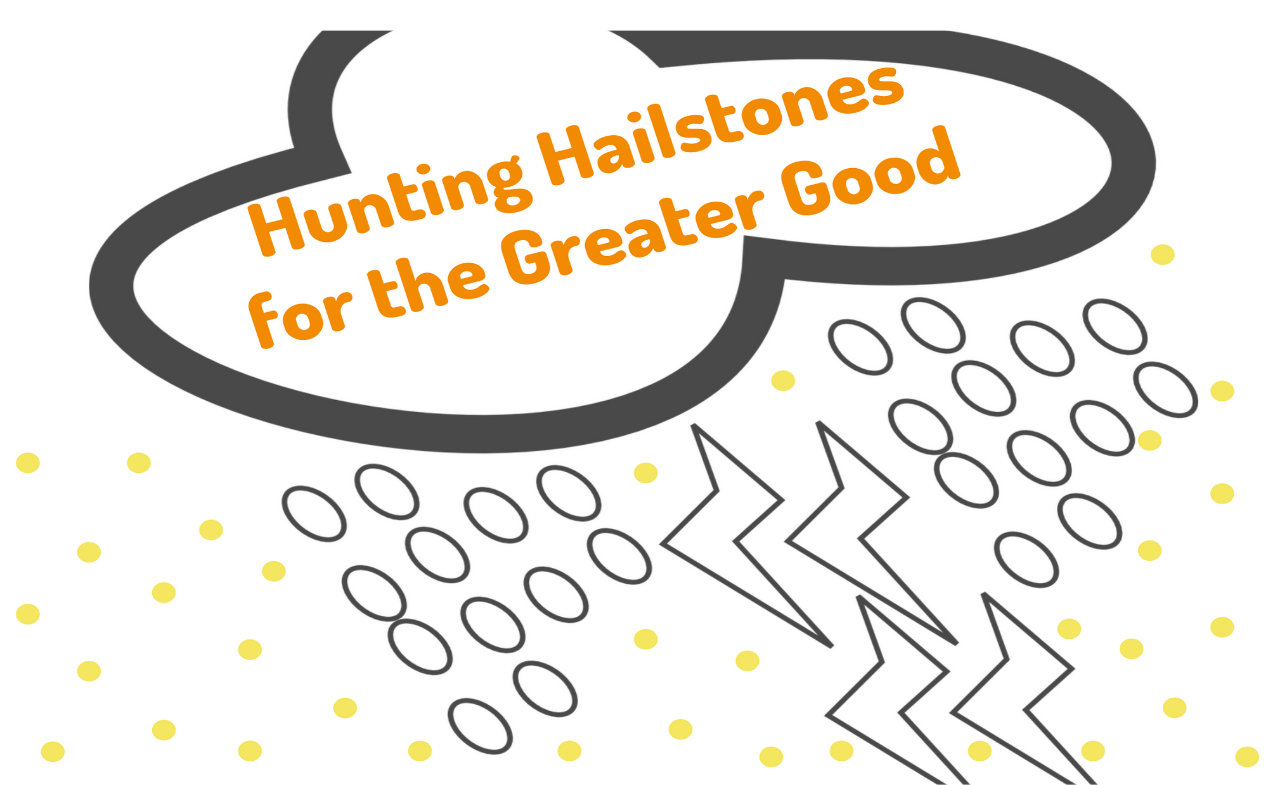
Extreme weather events can be costly and usually difficult to
predict, among which hail is especially a difficult one. Hailstorms come and go
quickly on small scales (usually several kilometres) for a short period of time
(usually within 10 minutes), but can cause great damage to aircraft, vehicles,
houses, and crops, and can be deadly to livestock and people. Researchers from
all over the world are working towards a better understanding of hail to
improve the ability of hailstorm forecast and modification, to mitigate the environmental
and financial impact.
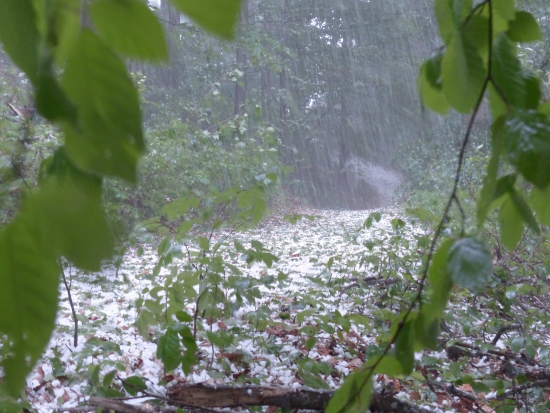
A group of researchers from Peking University in China are
studying the role of aerosol in the formation of hailstones, and they have
involved citizens in the project since 2016 to help with the research by
collecting freshly fallen hailstones across the whole country. The name of the
citizen science project is Hailstone Hunting!
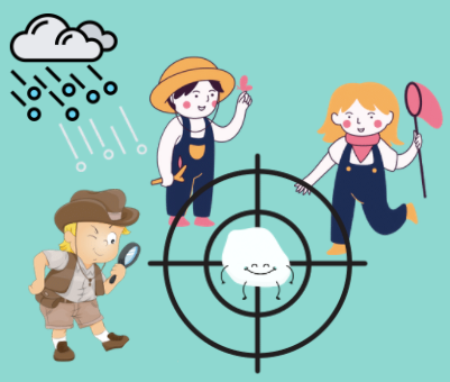
Hold on there for a second! You might be
wondering: freshly fallen hailstones? Across the country? China is huge!
Hailstones melt into water, and they can easily be contaminated! So how can it
be done?
Here’s how the hunting goes!
The Hailstone Collection Citizen Science Project is led by
Professor Qinghong Zhang from Peking University, China. The online
communication platforms for their public engagement and project promotion are WeChat
and Weibo, which are dominantly used by people in China. The project team share
the initiative through a self-managed project social media account where they
educate about hail, invite people to help, and keep people posted on the
progress of the research. Besides a clear written instruction to tell people
how to help, they also made a simple and brief video demonstrating how to
collect fresh and clean hailstones without touching them directly.
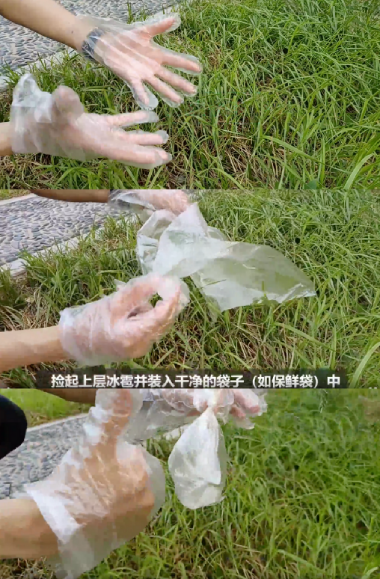
Screenshots from the demonstration video
After a hailstorm, in a safe environment, participants are asked
to select at least 15 relatively clean hailstones of varied sizes using
disposable gloves or plastic wraps and store them in the freezer immediately. They
are also asked to document the specific time and location of the hailstones
found on the ground. The researchers, as soon as possible, will travel to the
location to collect the samples with a portable freezer. They use different
means as necessary, travelling by plane, train, or car depending on the
location.

A screenshot from a video documenting a hailstone collecting trip from the research group after being informed by participants
Collected hailstones are used in the lab to study the formation
process to understand its growth mechanisms, so the more intact the ice
particles the better. According to one of the researchers, a PhD student Haifan
Zhang, around 60-90% of the collected samples can be effectively used in the
study, and every hailstone is unique with
quite a different shape, composition, colour and transparency. They
will carefully store the rest of the hailstones even if they are not usable due
to the current condition (too small or shattered) because it is believed that advanced
equipment and technology can decipher the rest of the hailstones in the future,
just like DNA evidence cracking numerous old cases.
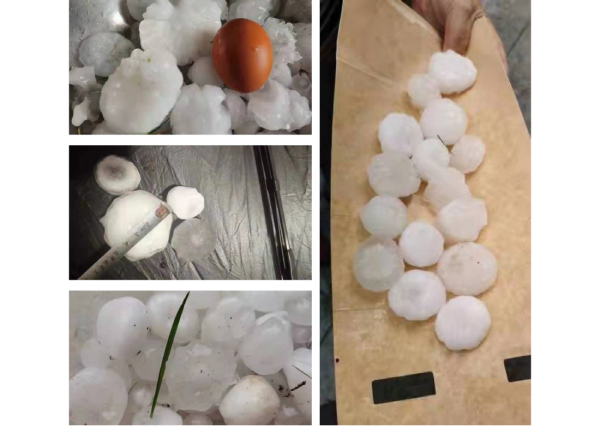
Hailstone samples. Images provided by the Research Group of Hail
from Peking University
They started the Hailstone Hunting Citizen Science Project in
2016. The project team built the network by asking help from local
acquaintances to participate and promoting the project on social media later on.
Until this year, researchers
have collected hailstone samples from 12 areas (provinces, municipality,
autonomous regions) across China (circled on the map below).

Participants come from diverse backgrounds like agriculture,
business, technology, and academia. Farmers, in particular, are willing to help
because hail has a significant impact on their lives. Professor Zhang told us
that one of the participants who took part before even upgraded her hail hunting
skill by setting up a net outside of the window to better capture the
hailstones this year.
The
researchers express their appreciation to the citizen scientists in a unique
way: gift exchange! Reciprocity is an important etiquette in China, so people
always try to return something to express their gratitude upon receiving a favour.
In the case of the hailstone hunting project, citizen scientists are given an agate
keyring and a thank you card for their contribution. Professor Zhang shared that
the idea was inspired by the notion that things in nature are one of a kind: there’s
a common saying that no two snowflakes are identical in the world! Similarly,
no two hailstones nor two agates are the same. When promoting the initiative,
the project team had a great approach by writing an article about how both hailstones
and agates have similar natural experiences in their formation. Both have
challenging journeys to form into something extraordinarily unique. The agate
keyring gifted to the people also allows the citizens to learn something
fascinating.

Photo credit: Alicia Cui
So, does the gift attract more citizen scientists? Professor Zhang observed that generally people did not care much about the gift but were eager to support the research because they wanted to contribute, and they understood the value.
There was no public call for hailstone collection during 2017 and 2020 since the team were focusing on lab work progress, but there were still people voluntarily collecting samples for them.
The research had progressed from studying collected hailstone samples and the findings have been published in three papers which can be found here: Water-soluble ions in hailstones in northern and southwestern China, Chemical composition of a hailstone: evidence for tracking hailstone trajectory in deep convection and Notable Contributions of Aerosols to the Predictability of Hail Precipitation.
The Hailstone Hunting Citizen Science Project has been reinitiated in 2021. There is more to collect, study, and learn due to the geographic diversity in China. If interested, please follow their official account on WeChat: PKU_Hail_Group. Let’s look forward to their future findings! And happy hunting!

![]()
--We hope to promote citizen science by showing the general public what’s happening in that world and encourage more people to get involved. We also want to create a platform for various citizen science projects to share their journeys.--
Joint Centre for Disaster Research
Massey University
New Zealand
In 2024, a questionnaire was conducted among the hail collection volunteers with 28 responses were received, to explore the motivation of volunteers and implication for Citizen Science projects. Please find the translated questionnaire and responses here: /Uploads/keditor/file/20240831/20240831190042_82761.pdf
Other data sources used in the following research in related to this project: /Uploads/keditor/file/20240831/20240831190504_37994.xlsx
Users Login